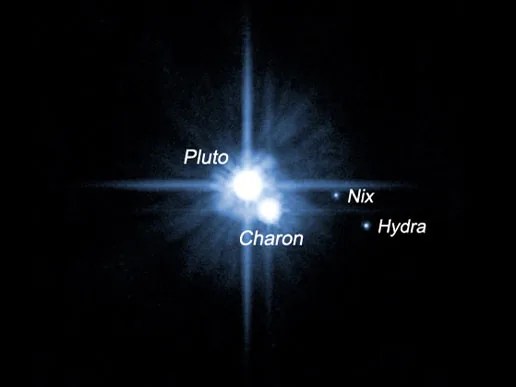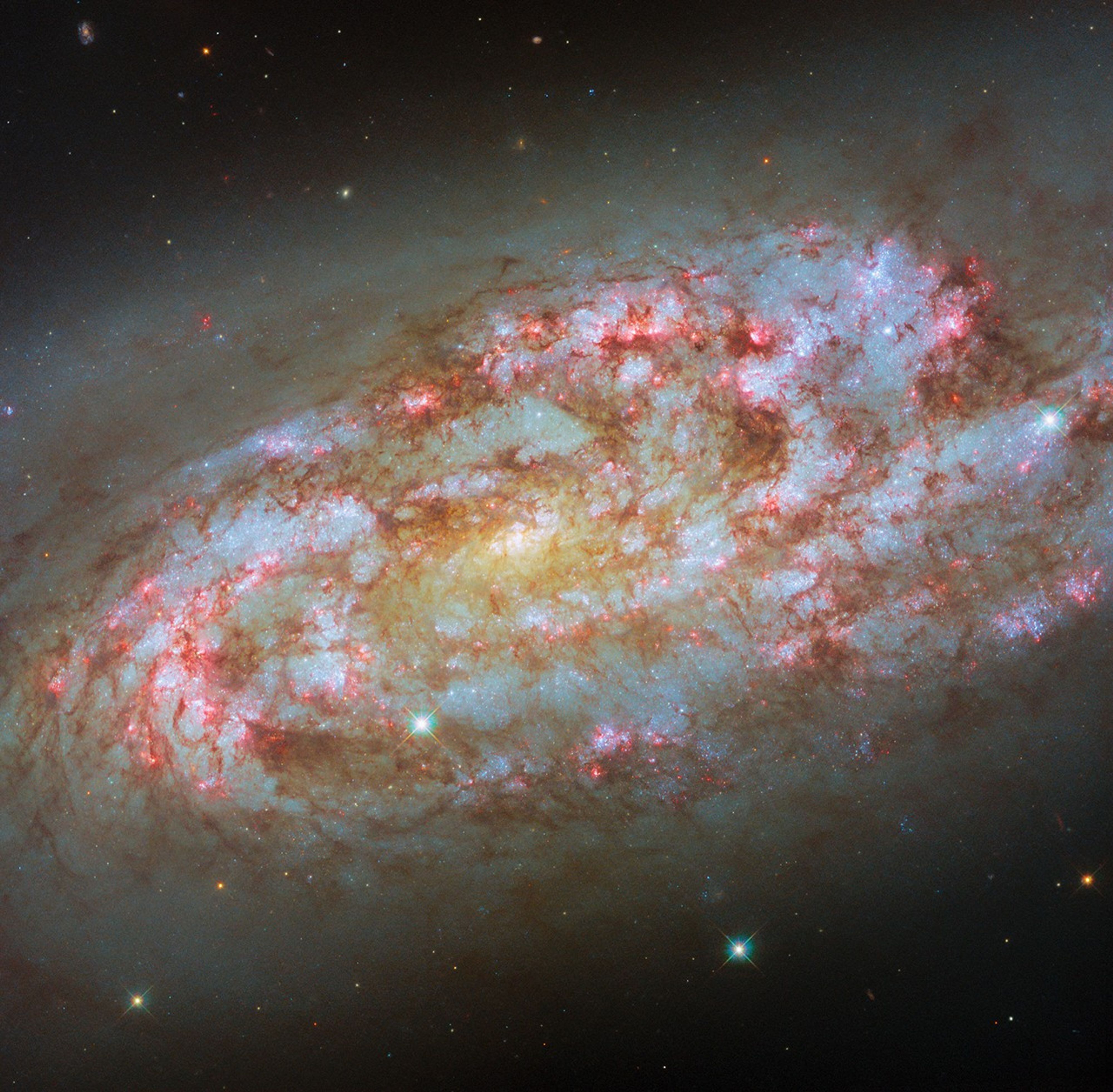A pair of small moons orbiting Pluto, which were discovered by NASA’s Hubble Space Telescope, have been named Nix and Hydra. Discovered in 2005, the two moons are roughly 5,000 times fainter than Pluto and are about two to three times farther from Pluto than its large moon, Charon, which was discovered in 1978.
Image above:
A pair of small moons that NASA's Hubble Space Telescope discovered orbiting Pluto now have official names: Nix and Hydra. Photographed by Hubble in 2005, Nix and Hydra are roughly 5,000 times fainter than Pluto and are about two to three times farther from Pluto than its large moon, Charon, which was discovered in 1978. Image credit: NASA, ESA, H. Weaver (JHU/APL), A. Stern (SwRI) and the HST Pluto Companion Search Team
The names were approved this week by the International Astronomical Union (IAU), the recognized authority for assigning designations to celestial bodies.
In mythology, Nyx is the goddess of the night. Among her many offspring was Charon, the boatman who ferried the dead across the river Styx into the underworld. Because asteroid 3908 already bears the Greek name Nyx, the IAU changed Nyx to its Egyptian equivalent, Nix. The mythological Hydra was a nine-headed serpent with poisonous blood. The Hydra had its den at the entrance to Hades, where Pluto and his wife Persephone were supposed to have entered the Underworld.
The team of researchers, who selected the names out of a list of more than two dozen candidates, used Hubble images to make the discovery in support of NASA’s New Horizons mission to Pluto and the Kuiper Belt beyond. Team members are based at Southwest Research Institute, Boulder, Colo.; Johns Hopkins University Applied Physics Laboratory, Laurel, Md.; the Space Telescope Science Institute, Baltimore; and Lowell Observatory, Flagstaff, Ariz.
Image above:
The artist's concept above shows the Pluto system from the surface of one of the candidate moons. The other members of the Pluto system are just above the moon's surface. Pluto is the large disk at center, right. Charon, the system's only confirmed moon, is the smaller disk to the right of Pluto. The other candidate moon is the bright dot on Pluto's far left.
Click image for full resolution.
Image credit: NASA, ESA and G. Bacon (STScI)
“You’re going to be hearing a lot more about Nix and Hydra in coming years, says co-leader of the discovery team, Alan Stern of Southwest Research Institute. “Astronomers are already applying for telescope time to study their orbits and physical properties. And when New Horizons flies by Pluto in the summer of 2015, each moon will be mapped in detail.”
In making the selection, team members explained that Nix and Hydra honor the search for new satellites and the New Horizons mission to Pluto by starting with the letters “N” and “H.” The first letter of Hydra also honors the Hubble Space Telescope that was used to detect the satellites. Similarly, Pluto’s name begins with the letters “P” and “L” to honor Boston astronomer Percival Lowell, who inaugurated the search that led to Pluto’s discovery. Unfortunately, Lowell did not live to see Pluto’s discovery, which was made by Clyde Tombaugh at Lowell Observatory in 1930.
For more information about this discovery, visit:

































